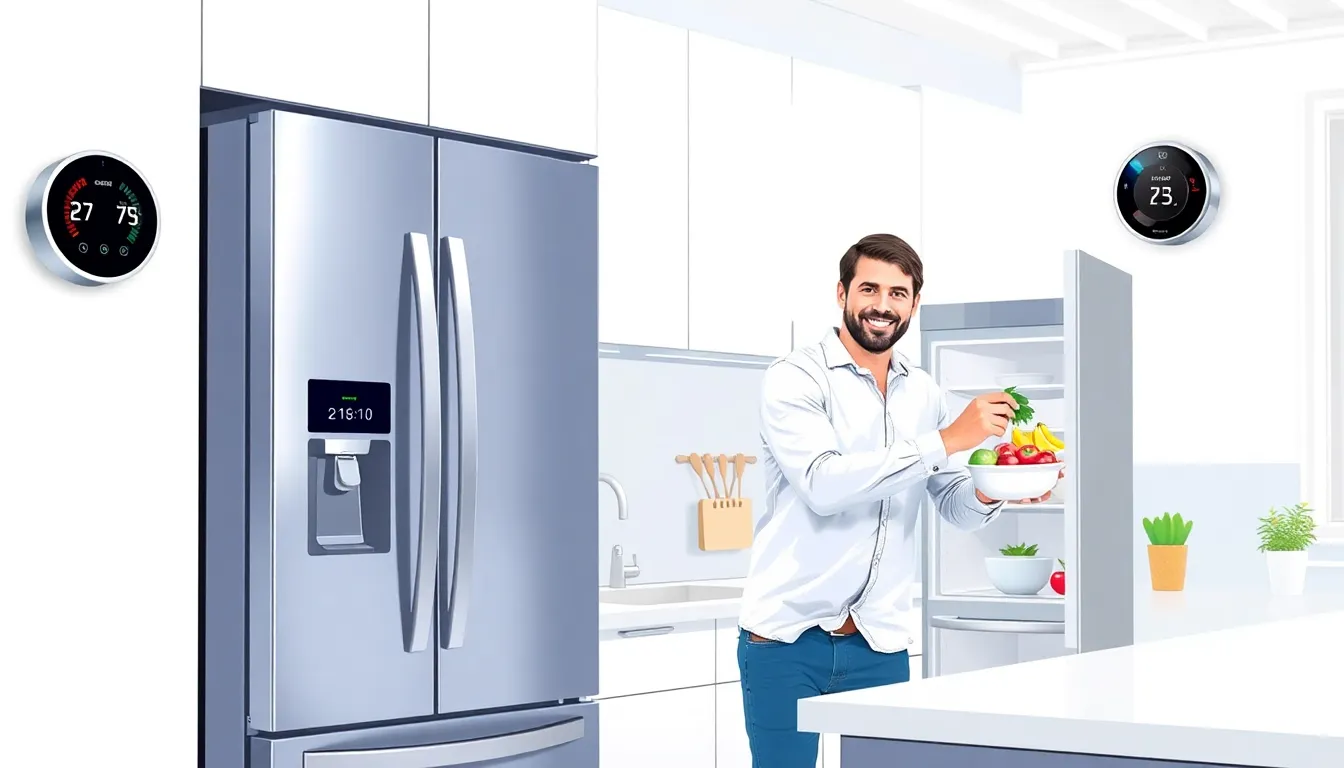In a world where your toaster might just be smarter than you, IoT connectivity solutions are the unsung heroes keeping everything in sync. Imagine a life where your fridge reminds you to buy milk while your thermostat adjusts to your favorite temperature before you even walk through the door. It’s not just a futuristic dream; it’s the reality that IoT brings to the table—literally!
Table of Contents
ToggleOverview of IoT Connectivity Solutions
IoT connectivity solutions encompass various technologies that enable devices to communicate effectively. These solutions include cellular networks, Wi-Fi, satellite, Bluetooth, and LoRaWAN. Each technology offers unique advantages tailored for specific use cases.
Cellular networks support high-speed data transfer, making them ideal for applications requiring large data volumes like video surveillance and remote monitoring. Wi-Fi excels in providing coverage in urban areas, allowing smart devices within homes or offices to connect seamlessly.
Satellite networks extend connectivity to remote locations lacking traditional infrastructure. They facilitate critical communications for agriculture, maritime, and emergency services. On the other hand, Bluetooth and its low-energy variant enable short-range, energy-efficient connections, perfect for wearables and smart home devices.
LoRaWAN stands out by offering long-range, low-power communication. It’s suitable for applications like smart agriculture and city infrastructure monitoring, where devices transmit small amounts of data over great distances.
Integrating these technologies creates a robust IoT ecosystem, enhancing functionality and user experience. Interoperability remains vital, enabling diverse devices to work together, regardless of connectivity method. Security protocols play a crucial role in protecting data as it travels across networks. Furthermore, scalability ensures systems adapt to evolving demands, accommodating more devices over time.
Understanding the strengths and limitations of various connectivity solutions empowers businesses and consumers to optimize their IoT deployments. By selecting the right technology, stakeholders can enhance operational efficiency and foster innovation in various sectors.
Types of IoT Connectivity Solutions

Several IoT connectivity solutions facilitate efficient communication across devices. Each solution serves specific needs within various applications.
Cellular Connectivity
Cellular networks provide reliable high-speed connectivity, making them suitable for applications requiring robust data transfer. They effectively support real-time monitoring and management, especially in video surveillance systems and smart transportation. 4G and 5G technologies enhance speed and latency, enabling seamless functionality for smart cars and health monitors. Businesses benefit from wide area coverage, allowing mobile devices and sensors to communicate efficiently across urban and rural settings.
Wi-Fi Connectivity
Wi-Fi connectivity excels in environments with high device density, such as offices and smart homes. By leveraging existing infrastructure, it reduces installation costs while providing fast data transfer rates. Wi-Fi easily connects devices like smart speakers, thermostats, and cameras, enhancing user convenience and control. High capacity and low latency allow for efficient streaming and communication, making it an ideal choice for urban IoT deployments where reliable internet access is crucial.
Low-Power Wide-Area Networks (LPWAN)
LPWAN technologies prioritize energy efficiency and long-range connectivity, making them perfect for applications such as smart agriculture and environmental monitoring. Solutions like LoRaWAN enable devices to transmit small amounts of data over vast distances, conserving battery life in sensors deployed in remote locations. Cost-effective and scalable, LPWAN supports numerous devices on a single network, ensuring widespread coverage for IoT applications without compromising performance.
Satellite Connectivity
Satellite networks offer unparalleled connectivity in remote areas lacking traditional infrastructure. They guarantee persistent communication for applications in agriculture, maritime and emergency response. Satellite solutions can transmit critical data over vast distances, ensuring reliable information flow regardless of geographic obstacles. The ability to connect unmanned devices in hard-to-reach locations enhances operational capabilities, making satellite connectivity indispensable for global IoT solutions.
Key Features of Effective IoT Connectivity Solutions
Effective IoT connectivity solutions vary in features, each critical for their success across different applications. Scalability, security, and energy efficiency contribute significantly to the utility of these technologies.
Scalability
Scalability ensures that IoT networks accommodate growth without performance degradation. Solutions like cellular networks and LPWANs allow organizations to expand their device count easily. High scalability supports various use cases, from smart cities to industrial automation. As demand fluctuates, infrastructure costs remain manageable. Enterprise-level deployments often require robust scalability to handle increased data traffic.
Security
Security is paramount in IoT connectivity solutions. Advanced encryption methods protect sensitive data transmitted between devices and cloud platforms. Regular software updates and patches address vulnerabilities and strengthen defenses. Robust security protocols instill confidence in users relying on IoT applications. Ensuring compliance with industry standards enhances the overall integrity of the network. Organizations must prioritize security measures to prevent unauthorized access and data breaches.
Energy Efficiency
Energy efficiency plays a vital role in prolonging device lifespans in IoT ecosystems. Solutions like LoRaWAN are designed specifically for low power consumption, which minimizes battery usage. Reducing energy expenditures not only lowers operational costs but also supports sustainability initiatives. IoT devices that prioritize energy efficiency contribute to longer-term deployments. This factor is essential for remote applications where power sources are limited, maximizing the functionality and reliability of the network.
Challenges in IoT Connectivity
Challenges in IoT connectivity can hinder the potential of smart technologies. Several critical areas require attention to optimize the effectiveness of IoT solutions.
Network Reliability
Network reliability impacts the performance of IoT devices significantly. Unstable connections disrupt data transmission, which leads to delays in response times. Many devices depend on constant connectivity for functionality, especially in critical applications like healthcare and smart transportation. Variability in signal strength can occur in urban environments or rural areas, affecting overall performance. A robust network design, utilizing multiple connectivity solutions, mitigates potential failures and enhances reliability. Ensuring seamless communication among devices leads to greater user satisfaction and operational efficiency.
Data Privacy Concerns
Data privacy concerns pose serious challenges for IoT deployments. Sensitive information transmitted between devices can become vulnerable to cyberattacks if not properly secured. Encryption and secure protocols play essential roles in safeguarding user data. Consumers often express apprehension over how their information is collected, stored, and utilized. Transparency from manufacturers and service providers supports building trust in IoT solutions. Regular software updates and compliance with data protection regulations strengthen the security posture, addressing privacy issues effectively. Prioritizing these aspects helps organizations maintain user confidence in their IoT ecosystems.
The evolution of IoT connectivity solutions is reshaping everyday life, offering unprecedented convenience and efficiency. As smart devices become increasingly integrated into homes and businesses, the importance of reliable and secure connectivity cannot be overstated.
With diverse options available from cellular networks to LPWAN, organizations can choose the best solutions tailored to their specific needs. Addressing challenges like network reliability and data privacy is crucial for fostering user trust and ensuring seamless operation.
As technology continues to advance, the potential for innovative applications in various sectors will only grow, making IoT connectivity a vital component of a smarter future.




